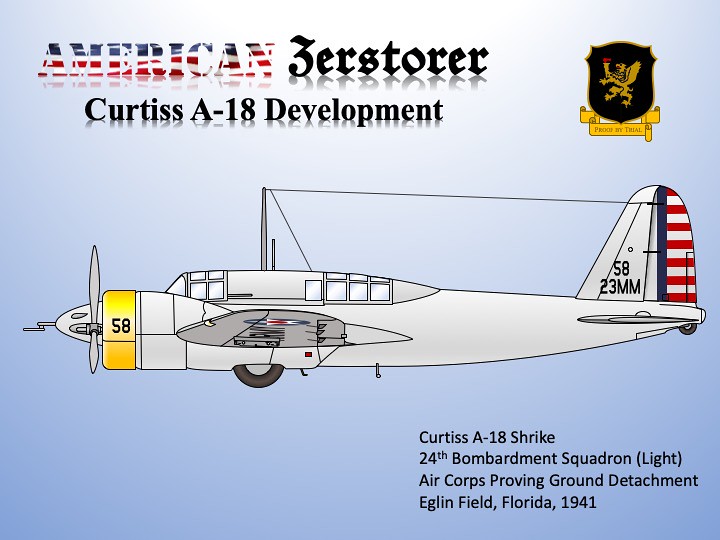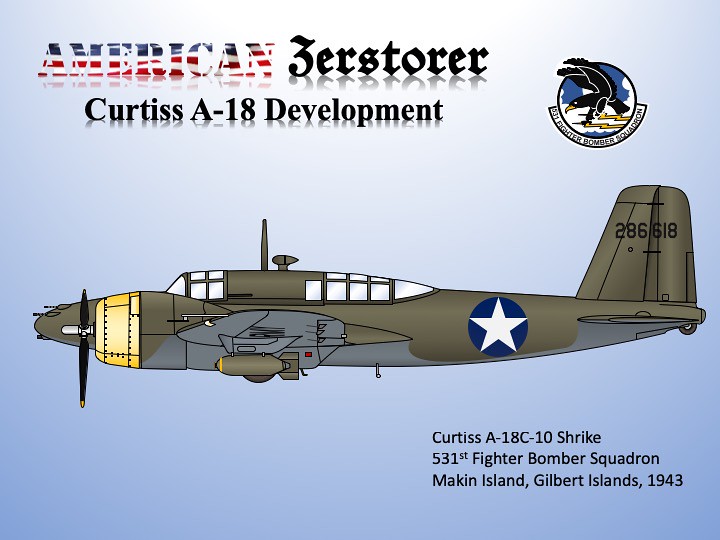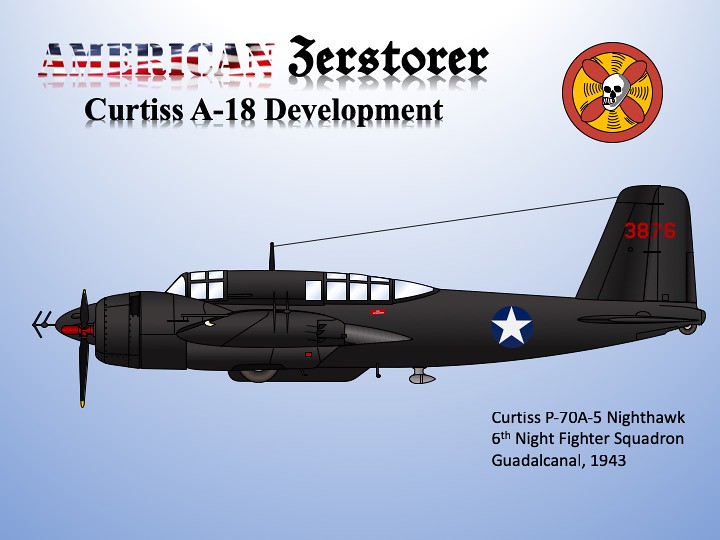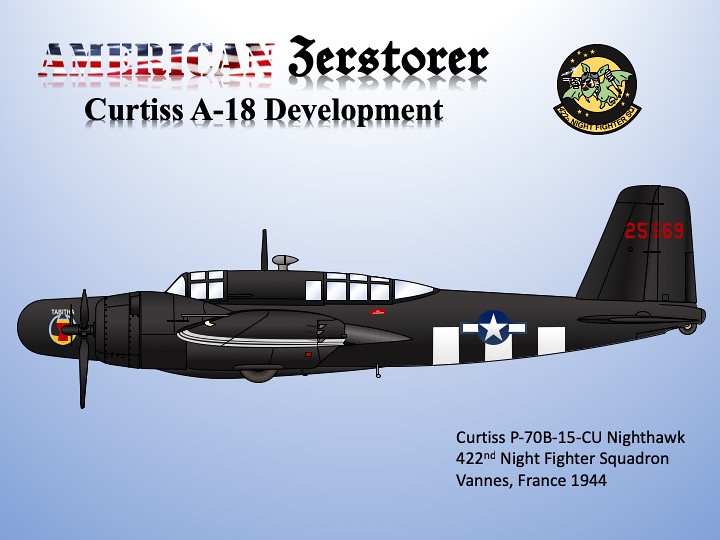American Zerstorer - The Development of the Curtiss A-18 Shrike.
I've always been fascinated by the Curtiss A-18. Only 13 were built, with a first flight in 1935. The fact that no more were built was apparently more a policy decision than one based on any qualities of the airframe. The USAAC decided that the A-18 had proven the concept, but with limited funds available focused on strategic bomber development (B-17 and B-18) and fighters (P-35/36/40). The thirteen A-18s built served in operational squadrons, first on a test basis, then in an operational role. One even flew operational patrol missions over the Panama Canal approaches at the beginning of US involvement in World War II.
Looking at the specifications of the service test A-18s, you can see a lot of similarity with the first versions of the Messerschmitt Bf 110, and the A-18 also compares well with other contemporary "heavy fighters," like the Potez 63 and Fokker G-1 - and all these first flew later than the Curtiss. See the comparison below:
Exact model YA-18 (A-18) Bf 110A-0 Potez 630 Bell YFM-1 Fokker G-1 Mercury
First Flight Date 1935 1936 1936 1937 1937
Entered service 1937 1937 1938 1940 1938
Total HP 1700 1262 1400 2180 1660
Top Speed 247 mph 268 mph 275 mph 277 mph 295 mph
Range 650 miles 680 miles 746 miles 2600 miles 938 miles
Wing loading 25.0 lb/ft2 35.7 lb/ft2 23.54 lb/ft2 25.3 lb/ft2 25.68 lb/ft2
What if the A-18 design had been persevered with and developed the way the Bf 110 was? Of course, there are many factors involved in such development, but it could have made for quite an interesting aircraft. When you consider that the late model Bf 110 had 100 mph more speed than the A-0, almost triple the range, significantly more firepower, etc., what could a late-model A-18 have been?
Shown below, a real world A-18 in pre-war service with the 24th Bombardment Squadon (profile based on photographs).
 Slide1
Slide1 by
cacree, on Flickr
Next, another real world A-18, this time in wartime service, POSSIBLY with the 108th Observation Squadron.
 Slide2
Slide2 by
cacree, on Flickr
Next, a What-if: a developed version re-engined with Allison V-1710-33s in P-40B-style cowlings (minus the cowl-mounted machine guns). This version also upgraded the armament from the 4 x .30 caliber weapons of the original to 4 x .50 calibre and one 20mm cannon, all in the nose. This version also had wing pylons for bombs or (later) rockets. The aircraft illustrated carried 2 x 1000pound bombs and 2 x 3-tube M-10 rocket launchers ("Bazookas").
 Slide3
Slide3 by
cacree, on Flickr
This next illustration shows the first long-range reconnaissance development of the A-18, designated the F-4 (developed instead of the real world P-38 Lightning variant).
 Slide4
Slide4 by
cacree, on Flickr
Next comes the ultimate attack version of the Shrike, the A-18C. Re-engined once again and reverting to air-cooled radials, this aircraft used the 1350-hp, R-1820-56 engines and needed a redesigned tail to cope with the extra power.
 Slide5
Slide5 by
cacree, on Flickr
When it came time to develop a radar-equipped specialty night fighter, the A-18 got the nod and was developed as the P-70 Nighthawk. Shown below is the first production version, the P-70A. Equipped with SCR-540 radar in the nose, the P-70 was armed with 4 x 20 mm cannon in a belly tray.
 Slide6
Slide6 by
cacree, on Flickr
Final service version of the Shrike to be developed was the P-70B with the much-improved SCR-720 radar. This version also got a much better-streamlined belly cannon installation for its four 20 mms. Shown below are two examples of the P-70B.
 Slide7
Slide7 by
cacree, on Flickr
 Slide8
Slide8 by
cacree, on Flickr
I hope you enjoyed this fantasy development history of one of MY favorite aircraft!